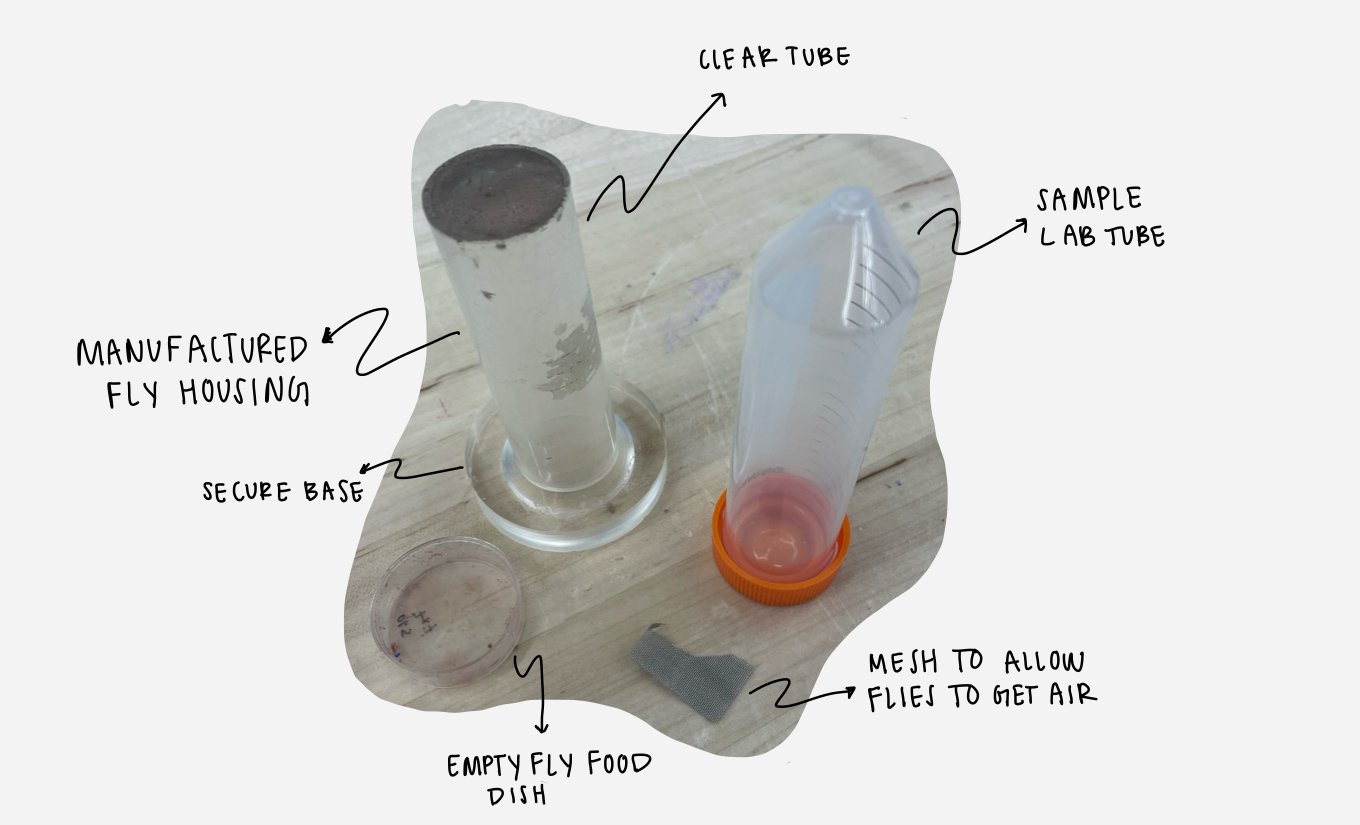Fly Cages: Lab Tool
Fall 2024: Client Project for Duke University Fly Labs
Skills: CAD, 3D printing, fabrication

Researchers at Duke Fly Labs use transparent tubes with small food disks to house flies and encourage mating. To prevent escapes, the disks must be securely attached to the tubes. While the lab owns a few costly manufactured tubes, most are improvised using tape. The goal of this project was to design a simpler, more cost-effective solution for securing the food disks.
Project Overview
The lab designs and performs experiments to learn about how the nervous system turns on for the first time during development using fruit flies as an experimental system.
Ideation
Using the manufactured tube as inspiration, I sketched a custom base for the lab’s sample tubes. The design consists of two parts: a wide cylinder that attaches securely to the tube, and a cap that holds the fly food. The cap threads into the base, creating a stable and portable setup.
Prototyping
My goal was to make the base modular so the clear tubes could be easily replaced. I first attempted to match the tube threads in SolidWorks, but when tolerances proved inconsistent, I adapted by cutting out the center of the orange caps and attaching them to the base. This ensured a secure fit while preserving modularity.
Threads are hard! This took around 30 iterations to master. I experimented with making the base shorter, then taller, then wider, then thinner… You get the picture.
Redesign
The researchers tested the prototype in their lab and found that the screw-on cap took too long to remove, allowing flies to escape. I redesigned the mechanism to use four sliding tabs that securely hold the dish in place. The tabs are fastened with threaded inserts and screws, making the food dish both stable and quick to replace.
Manufacturing
Once the design was finalized, the client requested 15 complete fly tube setups for their lab. I fabricated these by sawing off the tops of the clear tubes, securing mesh with a heat gun, and attaching each tube to the 3D-printed bases.
Use in the Lab + Impact on Research
The Carreira-Rosario Lab studies how the nervous system of an animal becomes active for the first time during development using Drosophila (fruit flies) as a model system. An essential part of our research is performing fluorescent imaging of fly embryos to monitor their neural activity as development progresses.
“To get fly embryos, we collect fertilized eggs from parents that carry specific genes of interest. The fly cages allow us to house the parents and attach an agar cap – the flies lay eggs on the cap which we can easily remove to collect the eggs.”
* AI visualization tools were used to enhance rendered presentation images. All concepts, prototypes, and design intent are my own.










